Fair Trade Garlands: Creating Employment for Refugee Women
- Posted on
- By Helen
- 0
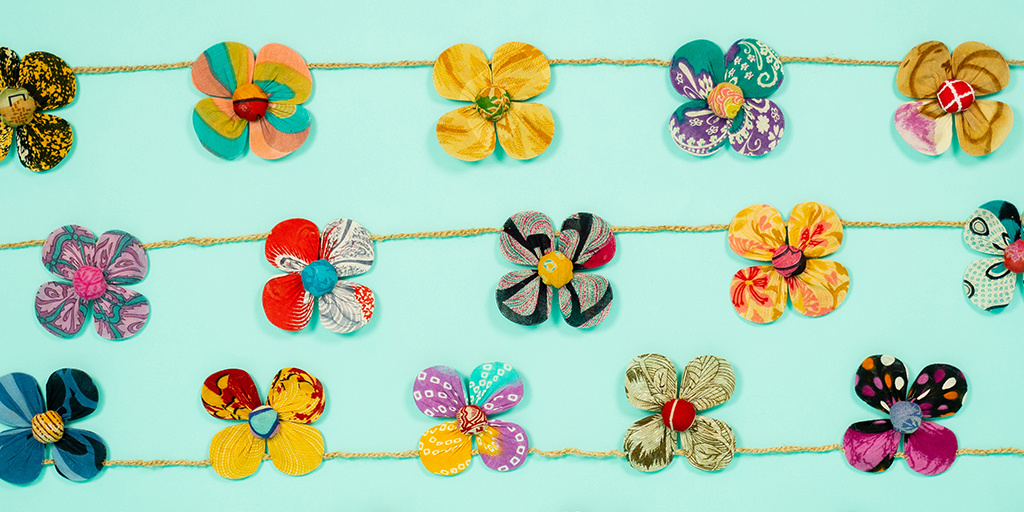
The Recycled Sari Flower Garlands are a HumanKind favorite. We sell hundreds every year and we keep ordering more. The flowers have this ability to bring instant joy and spark curiosity, a perfect combination for home decor. They also capture one of the things we love most about our store: the celebration of culture and connection.
These garlands are made across the world in a district of northern Bangladesh called Nilphamari. It’s a fertile flatland in the Ganges Delta, rich with history and traditions. Within it, there’s a population of refugee women who have been displaced from Bihar, India and marginalized in their new home. It’s these women who make the Recycled Sari Flower Garlands.

Bihari People Face Discrimination as Refugees
The Bihari are an Urdu-speaking linguistic minority group who have a unique history and culture that dates back to ancient times. However, in the last seventy-five years they’ve experienced hardship. The Indian-Pakistan Partition in 1947 forced the Bihari to flee their home due to violence and redrawn borders. In 1971, the Bihari were displaced again during the Bangladesh Liberation War. As refugees, they were ushered into camps across Bangladesh, where many remain to this day. After over 50 years of living as displaced people, the Bihari still face discrimination, social isolation, and language barriers that limit education and employment.
Still, aspects of the Bihari community and culture remain strong, especially when it comes to the handicrafts they make. The Bihari are known for their crochet work and they use techniques that have been passed down from mother to daughter for generations. As a treasured skillset, crocheted goods by Bihari women are highly marketable and generate income. It isn’t uncommon to see these crocheted garments, accessories, and home items sold throughout the region.
Fair Trade Means Women are Treated with Dignity and Respect
Hajiganji Handicrafts Crochet (HHC) was created to connect Bihari women and their craftwork to the international marketplace. HHC is a project of Prokritee, a fair trade company in Bangladesh, which guarantees them fair pay and stable employment. Being fair trade also means that crocheters are treated with dignity and respect, a critical component for this group of women. One crocheter, Husne Ara, said “I was able to work with other women who were also from Bihari families. So it was great being part of a community that appreciates our ethnicity and crocheting skills.” Today HHC has grown into a unit of 80 producers who make a range of artful, one-of-a-kind goods. In fact, the women’s traditional crochet skills have expanded to create new innovative products like the Recycled Sari Flower Garlands.
As hinted in the name, the flowers on the garland are made out of discarded saris. A sari is a traditional Southeast Asian garment worn by women. Its origins date back thousands of years in India, where the garment was first fashioned. It’s a long piece of fabric– usually made of silk, cotton or chiffon– that gets elegantly wrapped around the body. The fabric is made with intricate designs, patterns and colors and the way it’s styled may change based on occasion or culture. It truly is a walking piece of art.
Used Saris are Upcycled into Works of Art
When a sari wears out or goes out of fashion, it can be remade into something new. It’s an artform, in and of itself, that gives the fabric a second life to be cherished for years more. Upcycled saris can get transformed into so many things. Skilled artisans can turn saris into quilts, tote bags, and even jewelry. In this case, the Bihari women upcycle saris and turn them into flowers that are strung together to make a decorative garland.
How the Recycled Sari Flower Garlands are made:
First, iron wires are bent and looped to create the flower’s frame. At the same time, the recycled saris get cleaned and sorted.
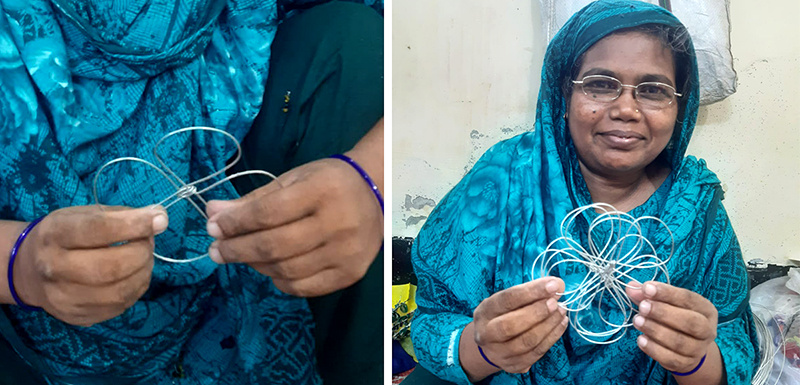
The sari fabric is cut to size and secured around the flower frame.
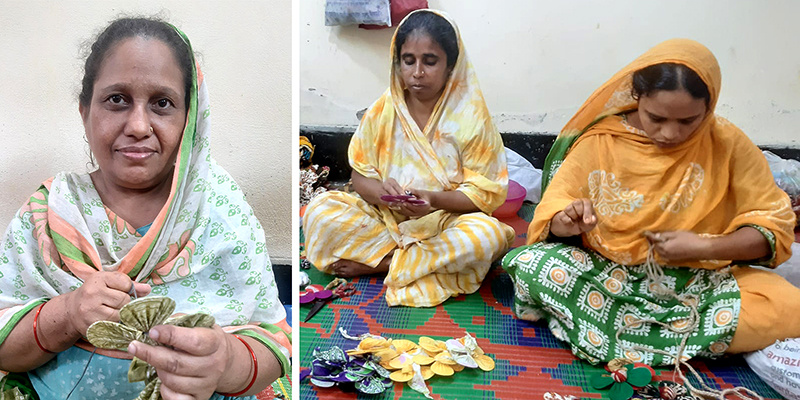
Each flower requires two different fabrics, one for the petals and one for the center.
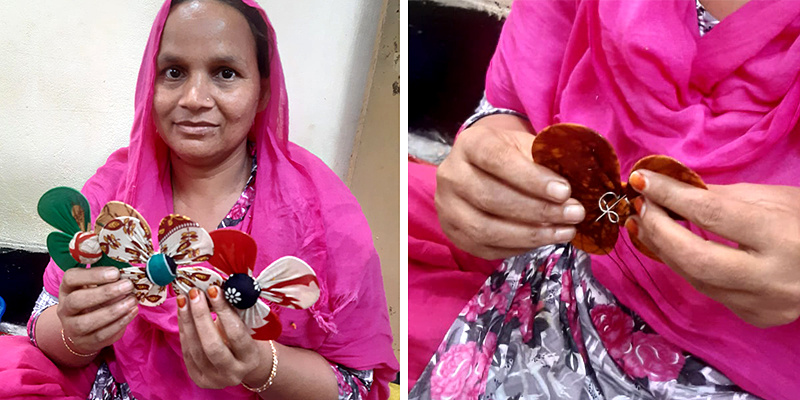
Finally, a rope made from jute tree fibers strings the individual flowers together. Each garland has a unique combination of colors and designs, making no two alike.
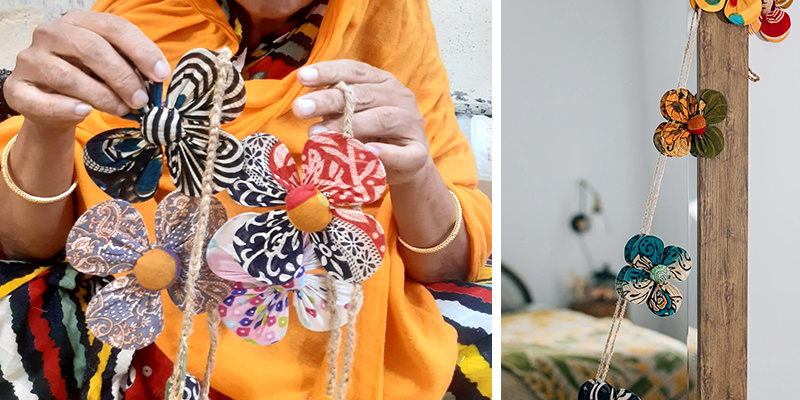
The finished garlands are exported all over the world! We feel so grateful to be able to carry home goods that capture such a special story.
A special thank you to our friends at Hajiganj Handicraft Crochet and Ten Thousand Villages for making this blog post possible!


Thank you for this information! It's wonderful to learn more about the people behind the products.